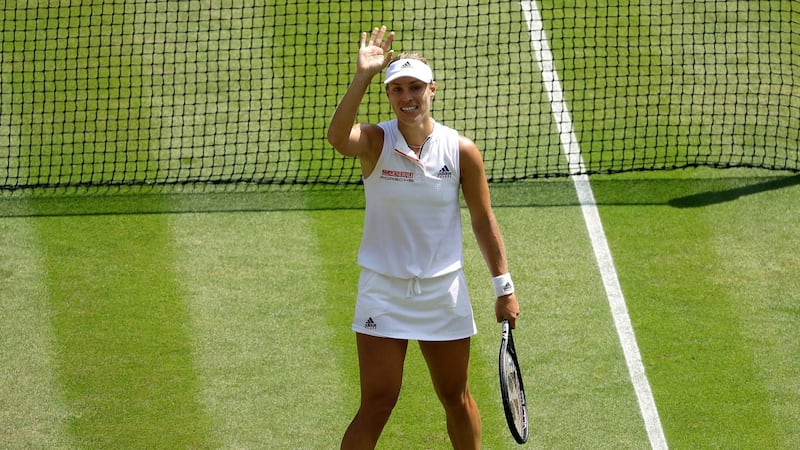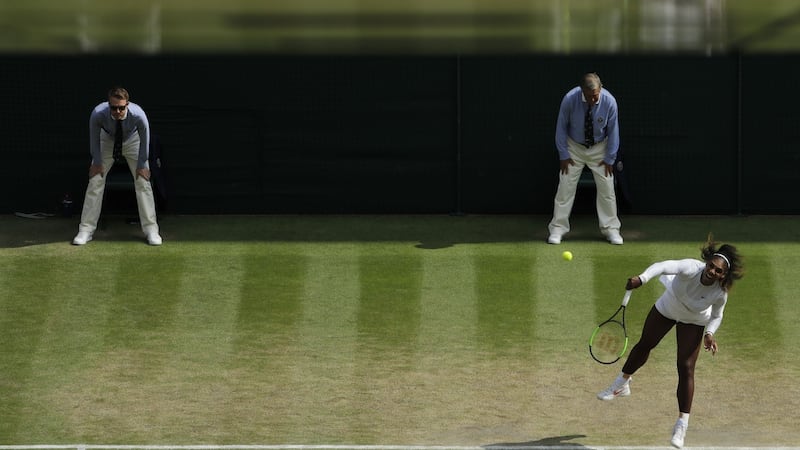Serena Williams, the player who had multiple surgeries during her pregnancy 16 months ago and at one stage said she couldn't walk to her mail box eased into her way 10th Wimbledon final.
Officially termed a comeback, even for a 23-times grand slam champion, it is becoming an extraordinary episode in Wimbledon tennis, the American appearing to surprise even herself about how she has swept through the draw unencumbered by her long layoff. The affectionate title ‘Momster’ has never seemed so apt.
"It's no secret I. had a super tough delivery. I lost count after, like, four surgeries because I was in so many surgeries," said Williams after overwhelming Julia Goerges in their semi-final 6-2, 6-4 in 70 minutes.
“It was just routine. Every day I had to have a new surgery. Because of all the blood issues I have. I was really touch-and-go for a minute.”
It means there will be no all-German final. Instead Williams meets Angelique Kerber to mirror the current political climate of a US-German confrontation. Meghan Markle will be coming. Donald Trump may drop in. It will be a very tremendous Royal Box.

Kerber, steady and controlled and never wavering from that high tempo, hard punching back court game dismissed Latvia's Jelena Ostapenko 6-3, 6-3 in two minutes less than Williams did Goerges. She will take bragging rights scraps where she can find them.
Two players who don’t step back will provide for a percussive event on Centre Court, Kerber particularly having to work out how to survive the Williams serve. The serve, it’s always the serve.
Moving Williams towards the net and backline usually works but gaining enough control of the ball to do that has thwarted every player so far and Kerber’s comfort zone is back court, where she played against Ostapenko, retrieving just about everything.
That’s an enduring criticism of the 11th seed - that she pressurises by fetching everything. Ostapenko’s opponent disagreed.
“I think she’s doing winners and she’s going for the shots,” she said. It’s not like she’s just running and putting everything back.
“With me, of course, she was more defensive player because I hit the ball much harder. Otherwise, I think she’s not only defensive player, she can hit winners.
It is Williams’ fourth tournament since coming back. A double service break of Goerges and 87 per cent of winning first serves gave her total control. In contrast the first serve points won by Kerber was at 61 per cent.
After speeding to 4-2 in the second set, Williams’ only apostrophe to slow down an otherwise racy narrative was dropping her serve for 5-4.
But in an almost spiteful reaction and a marked change of gear, the 36-year-old immediately won her serve back and closed the match by breaking Goerges to love for 6-4.

“I think today it was more about experience. Overall she knew how to win that match by experience,” said Goerges. “I have never been at this stage at a Grand Slam before. Serena is the one you want to play, who you want to get the experience from.”
Williams’ last Grand Slam win was at the Australian Open in 2017, that of Kerber at the US Open in 2016. But despite all Williams’ problems it seems almost routine to make the final. She thinks not.
“C’mon guys, this is pretty awesome. To hear people say, Oh, she’s a favourite. Like, the last 16 months I’ve played four tournaments, and was carrying another human half that time.
“But when I wasn’t a favourite, I was kind of upset about that. It’s like, c’mon, what can make me happy?”
That’s no secret.



















